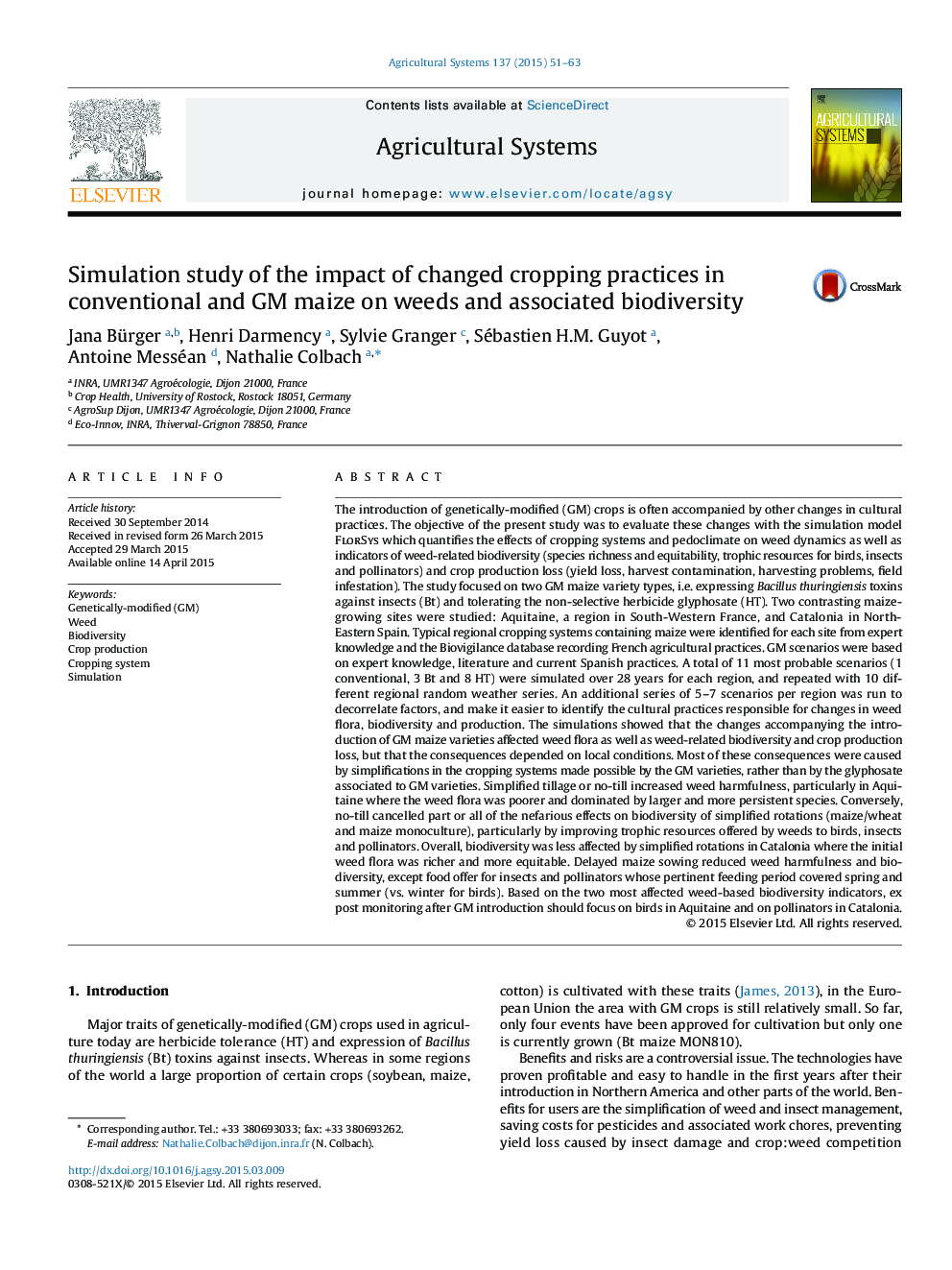| کد مقاله | کد نشریه | سال انتشار | مقاله انگلیسی | نسخه تمام متن |
|---|---|---|---|---|
| 4491156 | 1623233 | 2015 | 13 صفحه PDF | دانلود رایگان |
Hightlights
• Introducing genetically-modified (GM) crops may change other cropping practices.
• Effects on weeds, biodiversity and crop production loss were simulated.
• Simplified rotation decreased biodiversity, simplified tillage decreased production.
• Effects depended on regional cropping systems and weed flora.
• Advice for farmers and biodiversity monitoring was established.
The introduction of genetically-modified (GM) crops is often accompanied by other changes in cultural practices. The objective of the present study was to evaluate these changes with the simulation model FlorSys which quantifies the effects of cropping systems and pedoclimate on weed dynamics as well as indicators of weed-related biodiversity (species richness and equitability, trophic resources for birds, insects and pollinators) and crop production loss (yield loss, harvest contamination, harvesting problems, field infestation). The study focused on two GM maize variety types, i.e. expressing Bacillus thuringiensis toxins against insects (Bt) and tolerating the non-selective herbicide glyphosate (HT). Two contrasting maize-growing sites were studied: Aquitaine, a region in South-Western France, and Catalonia in North-Eastern Spain. Typical regional cropping systems containing maize were identified for each site from expert knowledge and the Biovigilance database recording French agricultural practices. GM scenarios were based on expert knowledge, literature and current Spanish practices. A total of 11 most probable scenarios (1 conventional, 3 Bt and 8 HT) were simulated over 28 years for each region, and repeated with 10 different regional random weather series. An additional series of 5–7 scenarios per region was run to decorrelate factors, and make it easier to identify the cultural practices responsible for changes in weed flora, biodiversity and production. The simulations showed that the changes accompanying the introduction of GM maize varieties affected weed flora as well as weed-related biodiversity and crop production loss, but that the consequences depended on local conditions. Most of these consequences were caused by simplifications in the cropping systems made possible by the GM varieties, rather than by the glyphosate associated to GM varieties. Simplified tillage or no-till increased weed harmfulness, particularly in Aquitaine where the weed flora was poorer and dominated by larger and more persistent species. Conversely, no-till cancelled part or all of the nefarious effects on biodiversity of simplified rotations (maize/wheat and maize monoculture), particularly by improving trophic resources offered by weeds to birds, insects and pollinators. Overall, biodiversity was less affected by simplified rotations in Catalonia where the initial weed flora was richer and more equitable. Delayed maize sowing reduced weed harmfulness and biodiversity, except food offer for insects and pollinators whose pertinent feeding period covered spring and summer (vs. winter for birds). Based on the two most affected weed-based biodiversity indicators, ex post monitoring after GM introduction should focus on birds in Aquitaine and on pollinators in Catalonia.
Journal: Agricultural Systems - Volume 137, July 2015, Pages 51–63
